If you’re planning to get scientific about your orchard it’s crucial you get to know your soil type. No matter how much work you do in your orchard, all that careful sowing, weeding and tending could be in vain if the quality of your soil is not up to scratch.
The soil provides your trees with the vital nutrients, water and air that they require for healthy growth and development. But each orchard or plot has its own blend of minerals, organic and inorganic matter which largely determines what crops, plants or trees can be grown successfully. Soil anchors a tree’s roots, facilitates their water supply, helps them breathe and offer the nutrients needed to support growth.
The three primary soil particles are sand, silt, and clay. The relative percentages of these components present make up the soil’s texture. Texture is important to overall soil and plant health as it relates to soil porosity, which refers to the pore spaces where air and water reside.
The ideal soil texture is a mix of sand, silt, and clay particles, known as a loam. In most cases the particles will not be balanced, and the soil will need to be altered by adding organic amendments. To evaluate soil texture, use a simple jar test to determine the percentages of sand silt, and clay which will help in determining soil texture/ soil type. Once the percentages are calculated, the soil textural triangle can be used to determine the soil type.
Soil Texture Analysis “The Jar Test” Procedure
How much clay, sand or silt do you have in your orchard soil? By doing this simple test, learn the soil’s texture class. This is an approximation and will likely underestimate the actual clay content of your soil.
Materials Required:
- Straight edged, clear jar
- Permanent marker
- Ruler
- Watch or stop watch
- 1 tablespoon of powdered dishwashing detergent/ Table salt.
- Mesh sieve
Procedure
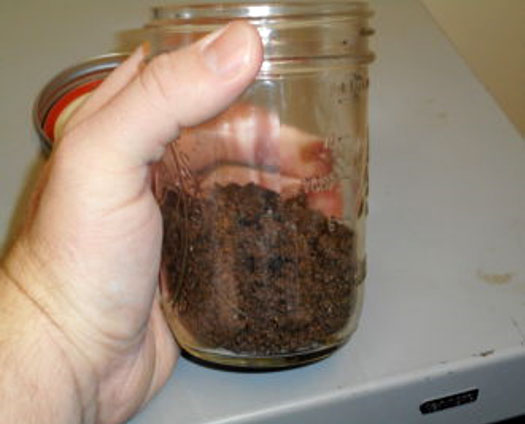
• Using a mesh sieve or old colander, shift the soil to remove any debris, rocks, and large organic matter (leaves, sticks, roots, etc.).
• Fill the jar ⅓ full of the soil to be tested
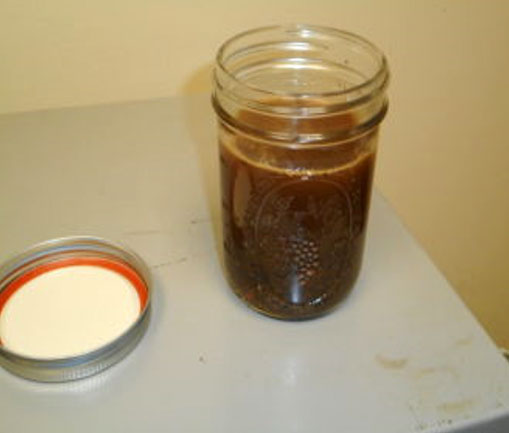
Fill the remainder of the jar with clean water, but leave some space at the top.
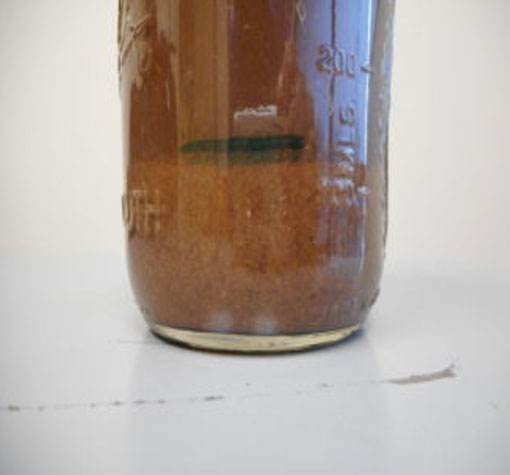
• Add 1 tablespoon of powdered dishwashing detergent
• Cap the jar and shake vigorously until the soil turns into a uniform slurry.
• Set on a level surface and time for one minute.
• Place a mark the outside of the jar, showing the coarse sand layer settled at the bottom of the jar.
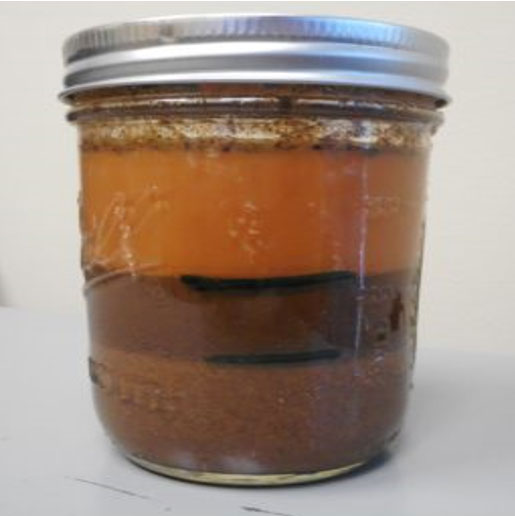
• Leave the jar in a level spot for 2 hours.
• Mark the top of the next settled layer with the permanent marker. This is the silt layer.
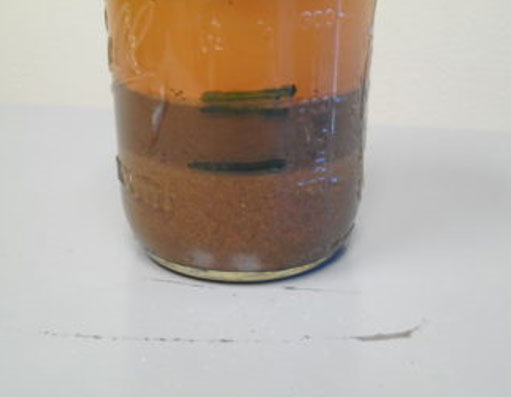
• Leave the jar on a level spot for 48 hours.
• Mark the top of the next settled layer with the permanent marker. This is the clay layer that has settled on top of the silt layer.

• Using a ruler, measure and record the height of each layer, and the total height of all three layers.
• Use the soil texture analysis worksheet below to record results.
Use the soil texture triangle to estimate the soil type for the site
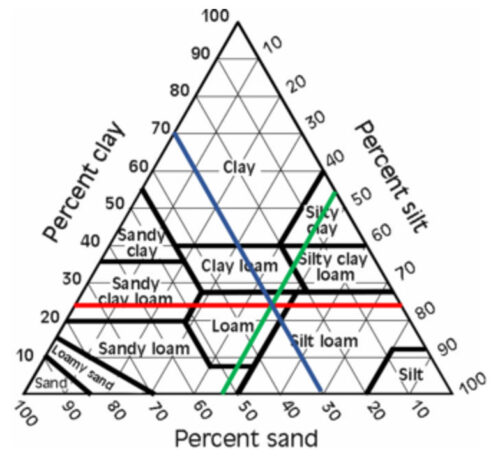
The clay percentages are listed on the left side of the triangle. Lines corresponding to clay percentages extend from the percentages reading left to right (see red line).
The silt percentage is on the right side, with lines extending downwardly, diagonally right to left (see green line).
The sand percentage is on the right side, with lines extending upwardly, diagonally right to left (see blue line).
Track the lines with the percentages measured and find the spot on the triangle where all three lines intersect. The region where these lines intersect indicates the soil type present. The example shown represents a loam soil texture.
Soil Texture Analysis “The Jar Test” Worksheet
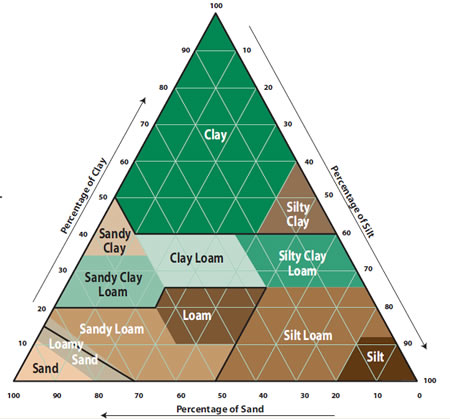
Measurements
- Height of sand layer ……………. inches / cm
- Height of silt layer ………………. inches / cm
- Height of clay layer ……………. inches / cm
- Total height of layers ………….. inches / cm
% Sand =
(Sand height) / (Total height) x 100 = …………………… % Sand
% Silt =
(Silt height) / (Total height) x 100 = …………………………. % Silt
% Clay =
(Clay height) / (Total height) x 100 = ………………………. % Clay
Remember that this is an approximation and will likely underestimate the actual clay content of your soil. The more thoroughly your sample is dispersed by mixing, the more accurate your measurements will be. However, to achieve results such as those obtained from a soil laboratory, a hydrometer must be used to measure the density of the suspension that remains after the large particles have settled. As an optional addition to the procedure listed above, the sample could be mixed initially (step 1) in a blender for 10 minutes rather than shaking by hand. This serves to more thoroughly disperse floccules of clay which may otherwise settle with the sand and/or silt fractions due to their size.
AI-powered IoT startup redefining J&K’s horticulture ecosystem by building technologies for nextgen orchards.

What we do
- Weather Alerts & Forecasting
- Disease & Pest Prediction
- Fertigation Advisories
- Foliar Plans
- Spray Advisories
- Soil Health Tests
Follow Us
Email: connect@orchardly.co
Phone: +91-79-49114444
© Orchardly. All rights reserved. Privacy Policy • Terms of Use • Refund Policy
Orchardly™ – Better Orchards. Always